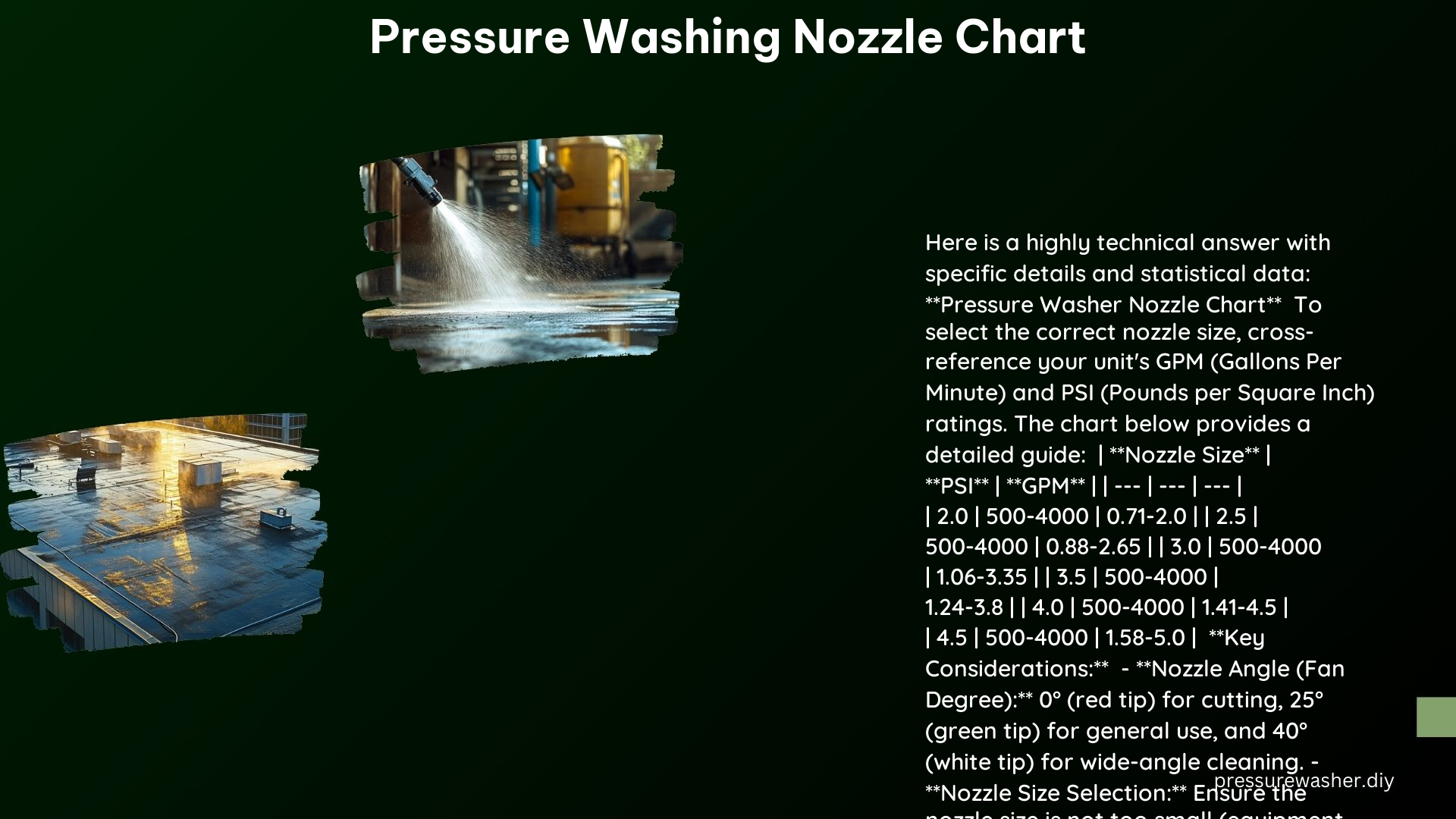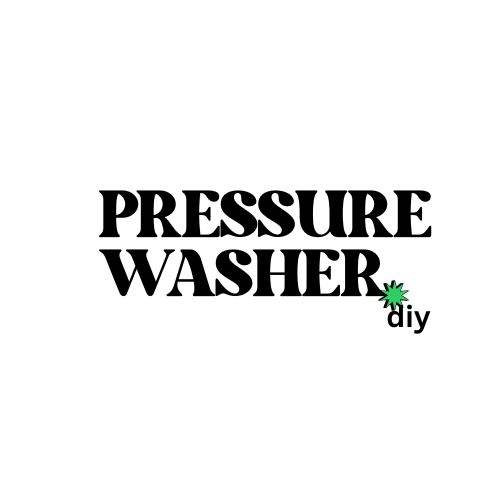Pressure washing is a highly effective cleaning method that relies on the precise selection of nozzles to ensure optimal performance and safety. A pressure washing nozzle chart is a crucial tool that helps users choose the right nozzle size based on their pressure washer’s PSI (Pounds per Square Inch) and GPM (Gallons Per Minute) ratings. This comprehensive guide delves into the intricacies of pressure washing nozzle charts, providing in-depth explanations of the factors to consider, technical specifications, and practical examples to help you make informed decisions.
Understanding Pressure Washing Nozzle Charts
Pressure washing nozzle charts are detailed tables that cross-reference PSI and GPM ratings to determine the appropriate nozzle size. These charts typically consist of three key columns:
-
PSI (Pounds per Square Inch): This column represents the pressure rating of the nozzle, measured in pounds per square inch. The PSI rating is a crucial factor in determining the cleaning power and effectiveness of the pressure washer.
-
GPM (Gallons Per Minute): This column indicates the flow rate of the nozzle, measured in gallons per minute. The GPM rating is essential in understanding the volume of water being delivered by the pressure washer.
-
Nozzle Size: This column provides the corresponding nozzle size based on the PSI and GPM ratings. Nozzle sizes are typically measured in inches or millimeters and directly impact the flow rate and pressure of the water stream.
Factors to Consider When Selecting a Nozzle

When choosing the right nozzle for your pressure washing needs, several key factors must be taken into account:
-
PSI and GPM Ratings: As mentioned earlier, the pressure washer’s PSI and GPM ratings are the primary determinants in selecting the appropriate nozzle size. Matching the nozzle specifications to the pressure washer’s capabilities is essential for optimal performance.
-
Nozzle Angle (Fan Degree): The angle of the nozzle spray, also known as the fan degree, can range from 0° to 40° or more. The choice of nozzle angle depends on the specific cleaning application, with narrower angles (0°) suitable for high-pressure tasks and wider angles (40°) better suited for broader coverage and gentler cleaning.
-
Application: Different cleaning tasks and surfaces require different nozzle sizes and angles. For instance, a 0° nozzle is ideal for cutting and high-pressure applications, such as removing stubborn stains or stripping paint, while a 40° nozzle is more suitable for washing vehicles or cleaning delicate surfaces.
Technical Specifications
To fully understand pressure washing nozzle charts, it’s essential to familiarize yourself with the technical specifications of nozzles:
-
Nozzle Size: The nozzle size, measured in inches or millimeters, directly determines the flow rate and pressure of the water stream. Larger nozzle sizes typically result in higher flow rates and lower pressure, while smaller nozzle sizes produce lower flow rates and higher pressure.
-
Hole Size: The diameter of the nozzle orifice, or hole size, is another critical factor that affects the flow rate and pressure. Larger hole sizes allow for higher flow rates, while smaller hole sizes generate higher pressure.
-
Color-Coding: Many pressure washing nozzles are color-coded to indicate their angle degrees. For example, red nozzles are often used for 0° applications, green nozzles for 25° applications, and white nozzles for 40° applications.
Examples and Calculations
To illustrate the practical application of pressure washing nozzle charts, let’s consider a few examples:
-
Example 1: If your pressure washer has a PSI rating of 2,000 and a GPM rating of 3.2, the correct nozzle size would be 4.5. This can be determined by cross-referencing the 2,000 PSI and 3.2 GPM values on the nozzle chart, which indicates a 4.5 nozzle size.
-
Example 2: For a pressure washer with a 4 GPM/4,000 PSI rating, the correct nozzle size would be 4.0 orifice size. This can be calculated by using the nozzle chart to find the intersection of the 4,000 PSI and 4 GPM values, which corresponds to a 4.0 nozzle size.
Conclusion
Choosing the right nozzle size for your pressure washer is crucial for achieving effective and safe cleaning results. By understanding pressure washing nozzle charts and considering factors such as PSI and GPM ratings, nozzle angle, and application, you can ensure optimal performance and efficiency in your cleaning tasks.
References
- pwoutlet.com. (n.d.). Pressure Washer Nozzle Sizing Chart. Retrieved from https://www.pwoutlet.com/Articles.asp?ID=142
- PowerWash.com. (n.d.). Pressure Washer Nozzle Selection Chart. Retrieved from https://powerwash.com/nozzle-chart/
- Portland Compressor. (n.d.). Pressure Washer Nozzle Selection Guide. Retrieved from https://www.portlandcompressor.com/washer/pressure-nozzle-chart
- Reddit. (2021). Replacement nozzle size chart. Retrieved from https://www.reddit.com/r/pressurewashing/comments/oqraym/replacement_nozzle_size_chart/
- Generac Power Products. (n.d.). Pressure Washer Nozzle Guide. Retrieved from https://www.generac.com/about/
